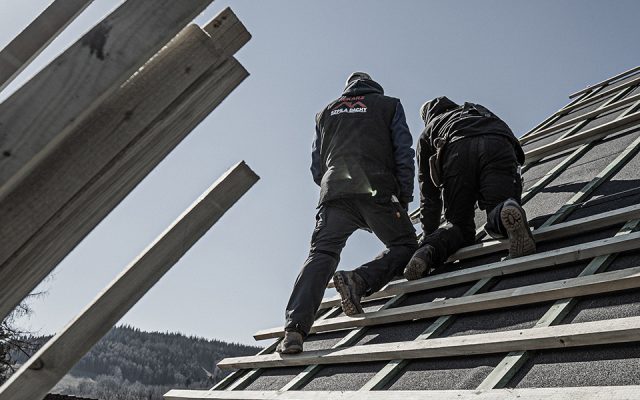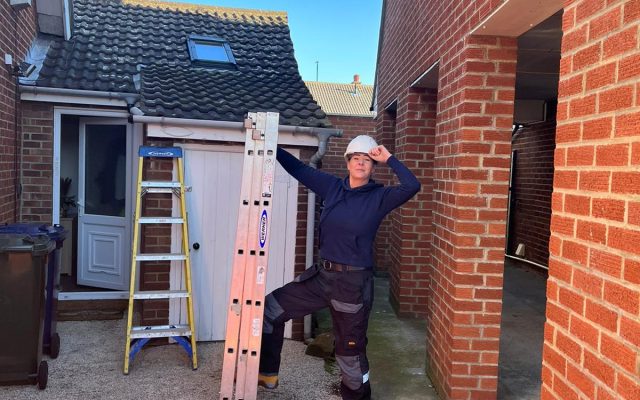It’s very common for mental health to be an unspoken issue in the construction industry. As industries go, construction tends to be heavily male-dominated, with only 15 percent of construction workers being women, an issue that we’ve discussed before, in our article, women in construction.
Men face unique challenges when it comes to mental health, and while things are improving, men still tend to be less open about their mental health issues.
For that reason, being aware of mental health and wellbeing in construction, how your crew relate to that, and what you can do to help them is vital. To mark Men’s Mental Health Awareness Month, we’ve put together this guide to show you what you need to know about mental health in the construction industry and how you can help take care of your team’s mental health.

Understand Mental Health
As a society, we have a pretty shoddy view of mental health. The stereotypes of mental health issues lead to poor understanding, and poor understanding means it can be difficult to spot when someone is suffering. For instance, drug addiction can be seen as a mental health issue. When it comes to OCD, there’s far more to it than simply washing your hands a lot.
If you run a business, it’s imperative that you understand what mental health issues actually look like, as well as the best treatment options for those suffering.
Offer an EAP Program
If you run your own business, you may wish to offer an Employee Assistance Program, or EAP. These are programs designed to help employees with any problems that they might be having, helping them to work through issues, including those related to mental health. An employee assistance program is not something that you must offer by law, but it is a benefit that your employees will deeply appreciate. Not only does it help them, but it demonstrates that you care for them.
These programs are available through a number of different schemes and could help your employees tremendously.
Everything that your employee discusses with an EAP provider is confidential. This means that they don’t need to worry about stigma or having their employment affected by any problems that they’re experiencing.
Train an Employee to Be a Mental Health First Aider
When we think of first aid on a building site, we tend to only think of physical injuries. However, first aid can also be necessary to help those experiencing mental distress or suffering. If one of your employees is experiencing a panic attack, they may feel like they have no one to talk to – worst of all, they may fear being laughed at if they speak up, due to social stigma around mental illness.
A mental health first aider is someone who is trained in communicating with those in distress and identifying mental health issues. They are not psychiatrists or healthcare workers, but they can encourage those in need of help to go to a healthcare professional.
Promote an Inclusive Culture
Building sites are often known for being fairly rough and ready places, full of banter. While some may love this, others may find the banter more upsetting than fun, particularly around certain topics. Promoting an inclusive environment is key to making your employees feel comfortable at work.
For instance, if you notice that an employee is not talking to anybody, don’t be afraid to take them to one side for a private word to make sure that they’re doing okay. If they aren’t, you can ask them (in a non-prying way), what it is that’s bothering them. If they don’t want to talk, don’t try to force it, but point them in the direction of resources that may help them.
Educate Staff on Mental Health
It can be tough to spot the effects of mental illness. There’s not a single standard response to depression, anxiety or panic attacks, which means that if you’re only looking out for one specific symptom, you could be missing other employees having problems. Training your team leaders on issues relating to mental health, including symptoms to watch out for, will mean you’re much more likely to spot the signs of poor mental health. If you can spot these signs, you’ll be able to point employees towards resources that can help them out.
Take Part in Charity Initiatives
Destigmatizing talking about mental health is a great way to promote a culture of inclusivity and care at work. One way to do this is by taking part in charity initiatives like Movember or sponsored runs. These events are fantastic ways to speak more openly about mental health and foster a culture of openness, as well as raise money for a good cause!
A Culture Isn’t Built in a Day
Cultures take a long time to change, which means that doing these things once and then not repeating them isn’t going to inculcate a positive culture in your workplace. To do that, you’ll need to repeat them – when one mental health first aider leaves the company, train another. When Movember rolls around again, take part in it for a second time. Don’t provide an EAP program for one year and not the next.
If you want to really change your company culture, or build on advances that you’ve previously made, you need to keep these changes up, and constantly strive to improve.
Conclusion
We hope that this guide on mental health and wellbeing in the construction industry will be of use to you. Each one of the steps that we’ve recommended, such as offering an EAP program, training mental health first aiders and taking part in charity initiatives, might seem like small steps. Combined together, however, they can help you nurture a better culture in your company, which will be better for you and your employees alike.


